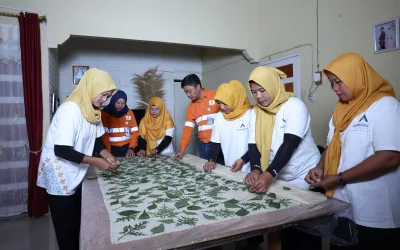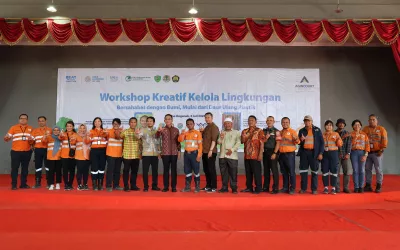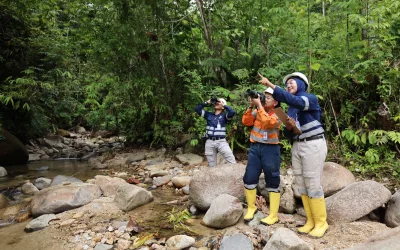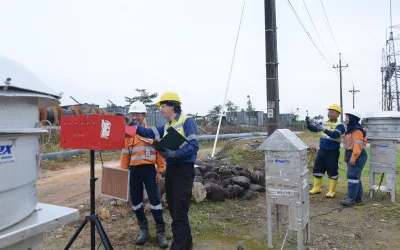Mining is one of the high-risk industries. In the mining industry, Mining Safety is an important aspect that needs to be implemented. This is regulated in the Minister of Energy and Mineral Resources Decree No. 26 of 2018 concerning Good Mining Principles, namely by implementing a Mining Safety Management System (SMS)
One of the elements in Mining SMS is Organization and Personnel, and Mining Work Safety Education and Training is one of the supporting aspects. As a form of management’s commitment, the PT Agincourt Resources (PTAR) Safety Policy also outlined the company’s obligation to provide necessary safety training for employees.
The training programs are provided as required and based on the considerations of the Head of Mining Engineering (KTT) with due regard to compliance with laws and job identification. These training programs are then compiled in a learning need analysis – LNA. The training is carried out, documented and specifically evaluated comprehensively to see the achievement of the expected targets and goals, namely the implementation of workplace safety to prevent Occupational Diseases and Accidents.
Here are some of the Mining Safety training provided to PTAR employees & Work Partners, that help them understand hazards and risks in the workplace so that they can execute appropriate procedures in accordance with the risk hierarchy of control. The purpose is to prevent accidents that result in property loss, injury or even death.
Induction: General OHS Induction & Hazard Awareness
General OHS Induction and Hazard Awareness are given to all PTAR employees, this training is mandatory and is one of the requirements for obtaining an Identity (ID) Badge to access the Martabe site area. This training is given during the onboarding process, refresher training is done annually and when recommended as a result of post-accident investigation.
Basic Safety Training: JSEA and Work at Height
Basic safety training is a group of training that aims to provide operational workers with the basic skills to be able to prevent serious injuries in the workplace (meet the golden rules). JSEA training is conducted to help employees acquire the abilities to identify hazards, assess risks and carry out optimal control at each work step, which is put in a written procedure that can be accounted for. Meanwhile, the Work at Height training is specifically provided for employees who will work at a height of 1.8 meters or more from the ground level and are required to use fall prevention and protection equipment. In this training, safety principles and case examples are given to increase employee awareness.
Company driving license (SIMPER) training
Company driving license (SIMPER) training is required before giving authorization to appointed employees to operate certain equipment. This is done to ensure employees who drive or operate the equipment, such as light vehicles, heavy equipment and transport and lifting machines, are competent to do their jobs properly.
Special Position Training: Fire Warden
Training for special positions, both structural and functional positions, is carried out to support the appointed personnel competencies in carrying out certain roles. One of them is the Fire Warden training. This training helps employees to understand the theory of fire, fire response procedures, how to use fire extinguishers and the role of a Fire Warden in the work area. Of course, this is part of the company’s emergency mitigation to minimize the impact of events that may arise.
General Training: Frontline Safety Leadership
General training takes place according to the requirements of a position after an employee starts work. This training is given so that every employee can apply the same standard. This training includes incident investigation, manual handling, replacing the vehicle’s tires, spill handling and frontline safety leadership training. Frontline safety leadership training is training given to frontline supervisors which focuses on safety, by providing examples of good behaviour and bad behaviour that can lead to Occupational Disease or accidents. It is hoped that after this training, the supervisors can set a good example for workers, especially in implementing Mining Safety.







